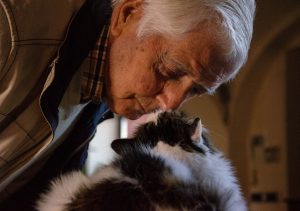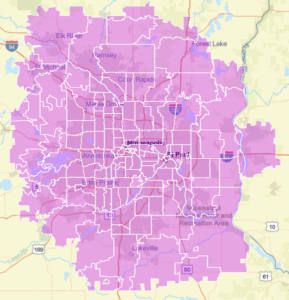Determining how to memorialize someone we have lost, whether human or furry family member, is a very personal decision. Like many aspects of grief, there is no right or wrong here – just what feels right for you. It can help to think about memorialization options when you are approaching your pet’s end of life. In this post, we explore some ideas.
Burial and Cremation
First, we will discuss two of the most common methods of memorializing a lost loved one: either burying them in a particular place, or having them cremated. As with everything in this article, one method is not necessarily better than another.
Both burial and cremation are common, socially accepted ways of memorializing a loved one. They can be meaningful because they can provide a physical reminder of our pet in the form of a place to visit their remains. For example, there might be a gravestone or other marker at the burial site, or in the case of cremation, we may have an urn that we keep in a special place. Alternatively, there may be a special place that our furry loved one used to particularly enjoy, like in your backyard, where ashes can be spread.
Often, when people envision cremation, they think of a process through which they receive an urn back with ashes at the end. There are two kinds of cremation where ashes can be sent back home. The first is called a separated cremation. In this scenario, a pet is cremated in a large chamber that can accommodate multiple pets at one time. The size of the chamber allows for ample physical space between everyone in order to ensure that each family receives only their pet’s remains back. In an individual cremation, the pet is in the crematory chamber alone. This style of cremation can be slightly more expensive due to the cost of fuel needed to run more machinery.
Sometimes we either may not receive our loved one’s ashes back, or may not have a specific place to visit them. One example of this is in communal cremation, where a pet is cremated with others. In this instance, ashes generally cannot be returned home due to the possibility of remains mixing. Communal cremation is a completely valid choice, whether due to an owner preferring not to keep ashes, or due to necessity (i.e. limited finances). There are many other ways to memorialize a pet that we will explore.
Mementos
Many people choose to keep a physical memento of their pet as a way of honoring their life. Below are a few examples.
- Collar/tags and toys. Some people choose to keep a beloved pet’s collar that they always wore, their collar tags, or their favorite toy.
- Prints. Many people like to make paw prints or nose prints to remember their pet. Paw prints can be made using clay (such as Crayola Model Magic) for an air-dry option. Nose prints and pawprints can also be made using an ink pad. Some owners use clay or ink prints as the basis of a tattoo or custom jewelry to remember their loved one.
- Lock of fur. For pets with longer fur, some people may choose to clip a small lock of fur to keep. This can be kept safe in a locket, vial, or shadow box.
- Photos, paintings, and shadow boxes. Pictures are a great memento alone, and they can be the basis for a shadow box. Try searching online for ideas on how you might arrange a shadow box to commemorate your pet. Many ideas incorporate some of the above mentioned items, such as a pawprint or a collar. Your only limit here is your imagination and the dimensions of the box, so feel free to be creative.
- Gardens. For owners with a green thumb, cultivating a memorial garden can be a beautiful, symbolic way to honor your pet’s time with you while fostering the growth of brand-new life. These can be as simple or as complex as you like, from a grouping of plants in a special corner of your yard to a large garden with walkway stones, benches, and a memorial plaque.
- Artisan-based services. The internet has greatly expanded owners’ options regarding artful ways to remember loved ones. Through a service like Etsy, or another local artist, paintings can be commissioned based on a photo of your pet to create an extra special memorial item. Others might prefer a memento that they can carry with them, like jewelry. Some artists and crematories offer jewelry with a small compartment to hold cremains, whiskers, or a tuft of fur. Others can even create gems and other glass artwork out of a small portion of cremains. There are many options beyond these for the pet owner who prefers a unique memento!
Ceremonies or rituals
Some people find great comfort in creating a ceremony to memorialize their furry loved one, similar to how you might hold a funeral for a human family member. Funerals or other remembrance ceremonies have been held for centuries for a multitude of reasons: they help us accept the reality of a loss, express our grief over the loss of someone special to us, and connect with others for support as we grieve.
Consider whether some form of ceremony or ritual may be meaningful for you in your grief journey. This can be done alone, or with other people.
Here are some ideas to spark your imagination.
- Consider incorporating meaningful dates. It may feel extra meaningful to remember your loved one on certain specific days each year, such as their birthday, the anniversary of their passing, or another special occasion such as their adoption date. For others, small day-to-day reminders of your pet (like memories that bubble up, or memorial items) might be all you need. There is no right way to grieve, nor a specific timeline, so do what fits you best.
- Write. Some people process their feelings in a very verbally-oriented way. Writing about your loved one can help to commemorate your loss and allow you to express how you are feeling. You might journal about your pet’s life, or about a favorite memory with them. Some people may choose to write a poem or song. This can be shared with others, such as on social media, or kept completely private; it is up to you!
- Meditate. Another idea to commemorate a loss is to meditate on your grief. It can be very helpful to sit with your feelings as you think about your loved one as a means of helping your body and mind release them. A simple meditation can be found here. As your grief changes and shifts over time, you may find that eventually your meditation focuses on feelings of gratefulness or even joy as you think about your loved one.
- Hold a ceremony of remembrance. This can be as long or short as you’d like, religious or non-religious – there are no limits. Some things to think about here incorporate the previous ideas mentioned, as well as a few additional ones:
- What important items should be included, if any? Perhaps you choose to display photos of your pet, items they used in life like their collar or favorite toy, or memorial items like a clay paw print or urn.
- How would you like to open and close the ceremony? Many people choose to light candles, read a meaningful poem, or have a moment of silence to reflect, as some examples. This can be a great place for music, too, especially if there is a certain song that reminds you of them.
- What would be a meaningful way to commemorate your loss? Some people choose to read short pieces they have written about their pet’s life; watch favorite videos of their pet, or run a slideshow of favorite photos; and/or take time to allow those present to share their favorite memories.
MN Pets will be holding our first ever Remembrance Ceremony in an upcoming Facebook Live on September 2, 2021! Stay tuned to our Facebook page for details on how you can submit a memory of your loved one to be read during the ceremony.
In conclusion, remember that whatever you choose, you get to remember your loved one in the way that fits you best. Your grieving process is as unique to you as your fingerprint.
To live in hearts we leave behind is not to die. – Thomas Campbell




